Some people may remember Hamish’s post back in November 2018, about the Agfa Optima 1035 camera that was so nearly something he liked, but not quite there: The Agfa 1035 and a Confusion of My Preferences
Well, in the comments, I made a throwaway remark about being able to find it a good home if Hamish didn’t want it. Not expecting anything but a winky-face emoji, I was surprised when Hamish offered to send it to me!
When it arrived, excited to get started, I unwrapped it and went to wind the film advance and fire the shutter to see how it felt. This was my first mistake. It turns out that the Agfa 1035 has a very clever little mechanism for turning the film advance lever into a rewind lever. Obviously, the last thing Hamish had done was to rewind the film, so it was still in rewind mode. Turning the lever further caused the clear plastic counter cover to ping off behind the oven in my kitchen, never to be seen again. It may have also damaged the counter mechanism, but more on that later…
Maybe the home I had offered wasn’t so good, after all! Undeterred, I put aside the slightly sick feeling in the pit of my stomach, fitted a roll of Kodak Ektachrome E100, crossed my fingers and hoped for the best! The first roll I shot quite quickly, not knowing what to expect from the results (and still not knowing if I’d totally destroyed the camera, at this stage).
My first impressions were:
- The camera is a very pleasing size in the hand.
- All the controls have a positive “click” or other reassuring tactile feedback.
- The self-timer is of a sensible duration, and very easy to use. It’s about 7 seconds before the red light comes on, then another 2 before the shot is taken.
- The viewfinder is a great size, and very bright…
- …though when I’m wearing glasses, I often miss the focus indicator at the bottom of the viewfinder. This means I forget to focus before shooting, much more often than I would with an SLR or a rangefinder.
- The aperture control is also tucked away, and easy to forget when shooting quickly – which is my default mode for a point and shoot. [NB – I only just realised that manual aperture control is only available for flash exposures!]
- There’s no aperture indicator in normal mode, so estimating depth-of-field is impossible.
- The ISO setting is achieved through turning a small ring around the lens element… it turns out that (despite Hamish’s assurances that it’s impossible to knock) it can also be adjusted all by itself if you leave the camera in your coat pocket! It took me 5 or 6 shots to notice it had been wrong for all that time.
This is what happens when you forget to set the focus properly… Still, the exposure itself was very encouraging!
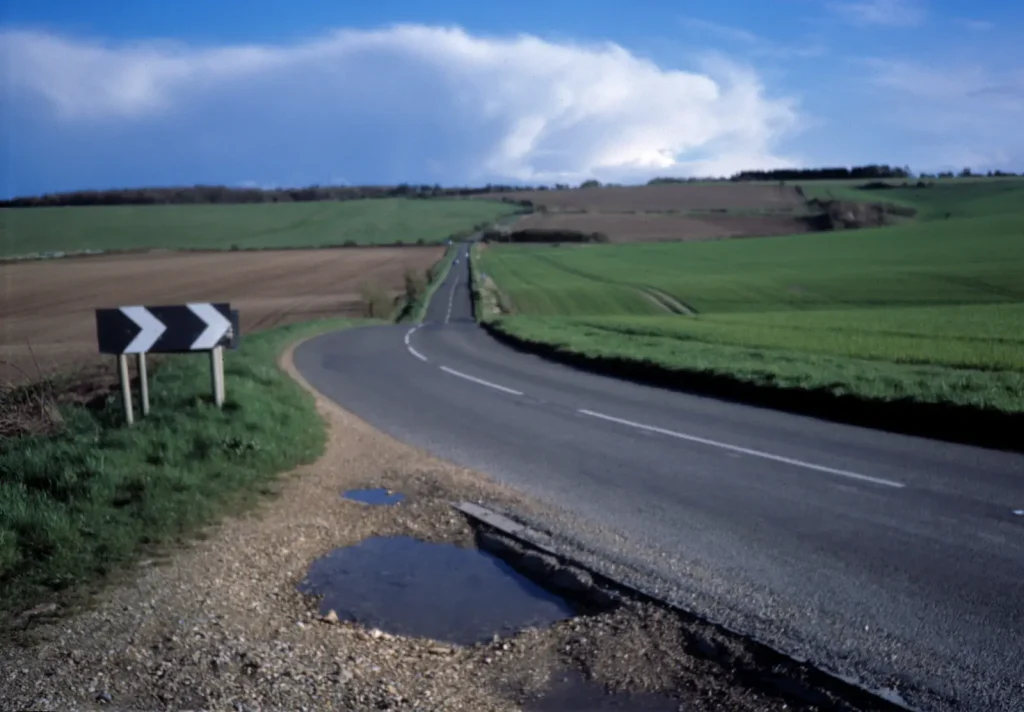
When I had the photos developed, though, I was astonished by how well Ektachrome can contain scenes of wildly varying brightness from deep shadows to really rather bright highlights. This was clearly a film I was going to enjoy shooting. All the exposures were automatically calculated by the Agfa 1035, and I’d made a point of shooting in tricky lighting to test the film, as well as the camera.
I apologise for the imperfect “scans” on some of the images in this post. I was using a Beta version of the pixl-latr, and having some teething trouble [it’s about time the production model shipped, eh, Hamish?
This one was shot at dusk in our village. The exposure time was a few seconds, and I rested the camera on a fence post to minimise shake.
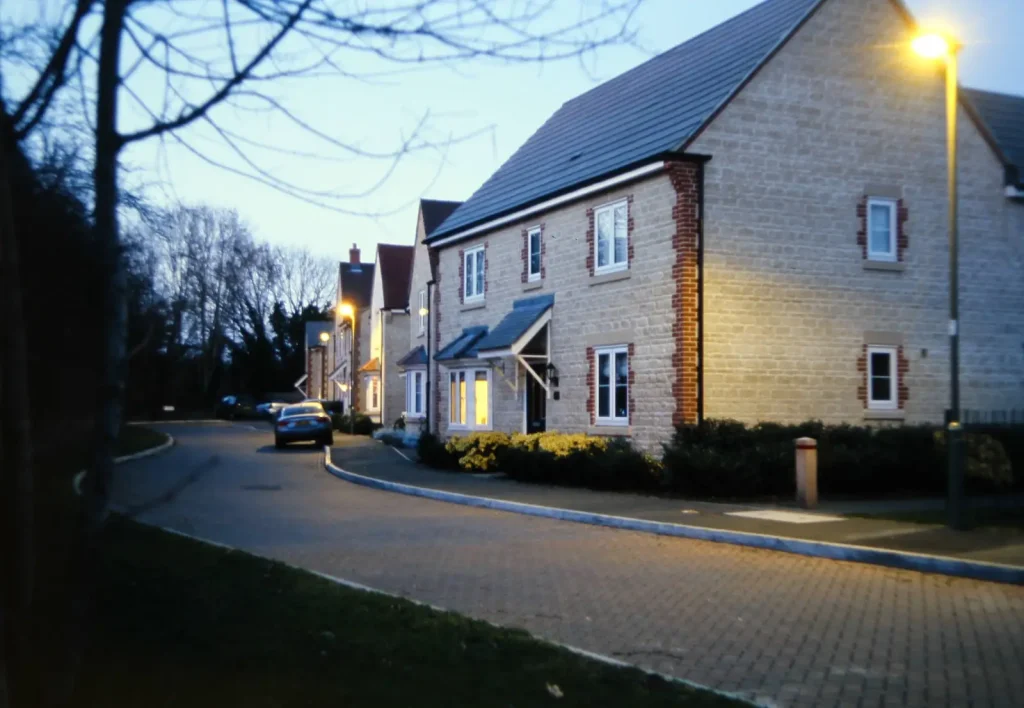
This photograph was taken in a dim stables at the Island Farm Donkey Sanctuary, and nicely showcases how the camera deals with tricky exposures. I was braced up against the doorframe for this one for stability.
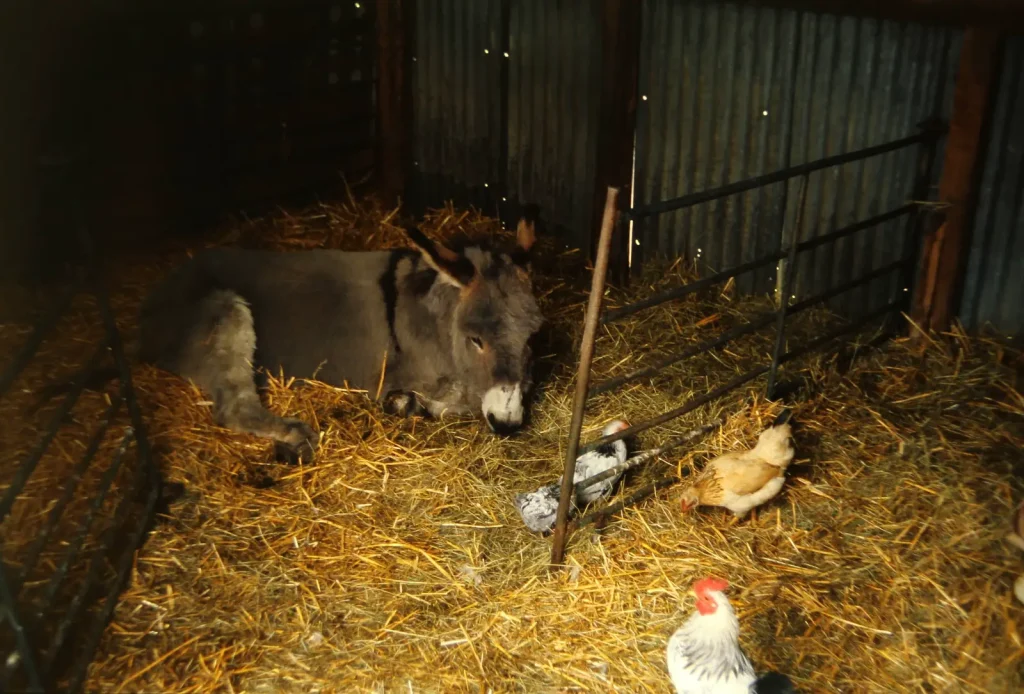
The Agfa 1035 was perfect for quick snapshots. I took this photo whilst sat in stationary traffic on my drive to work one morning. Luckily, I had the camera on the seat beside me. Being able to just pick it up, wind the lever and shoot with one hand within seconds made it possible to capture the beautiful morning mist without worrying if the traffic would start moving again before I’d finished!
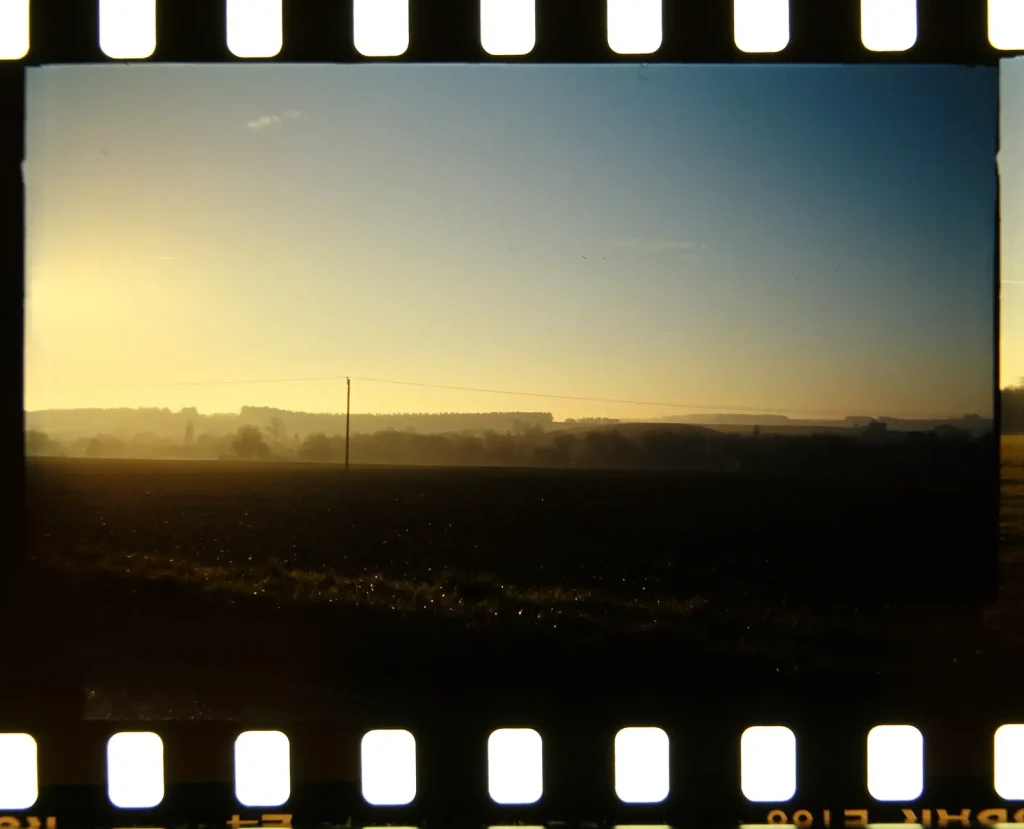
Second shot taken whilst in the traffic jam.
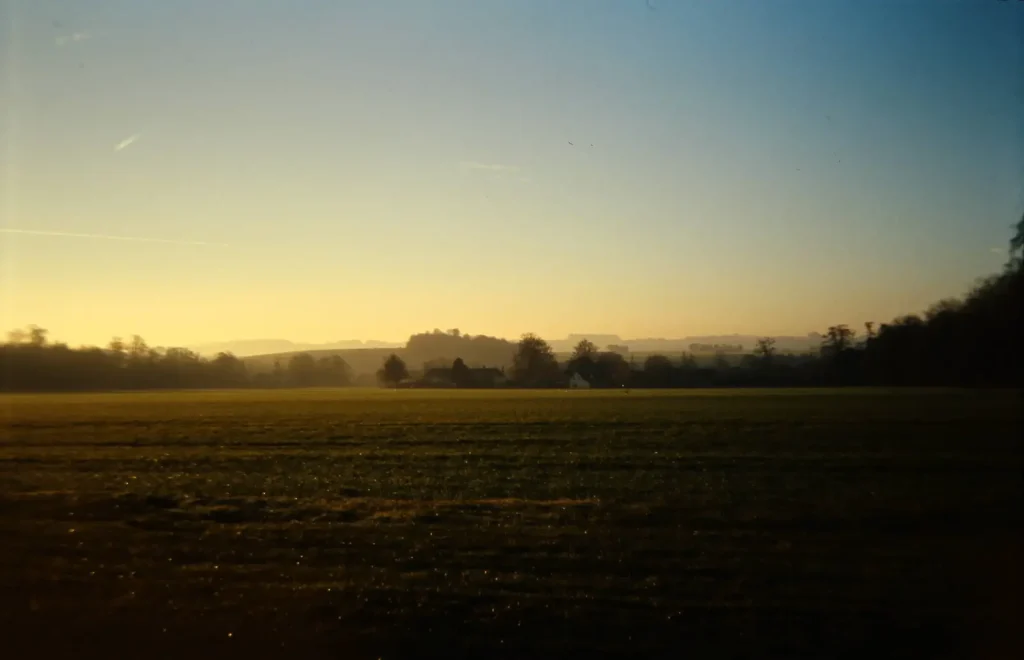
Looking out from the Ridgeway across the Vale of the White Horse towards Faringdon on the horizon. I love how Ektachrome has captured the colours – it’s just as I remember it at the time.
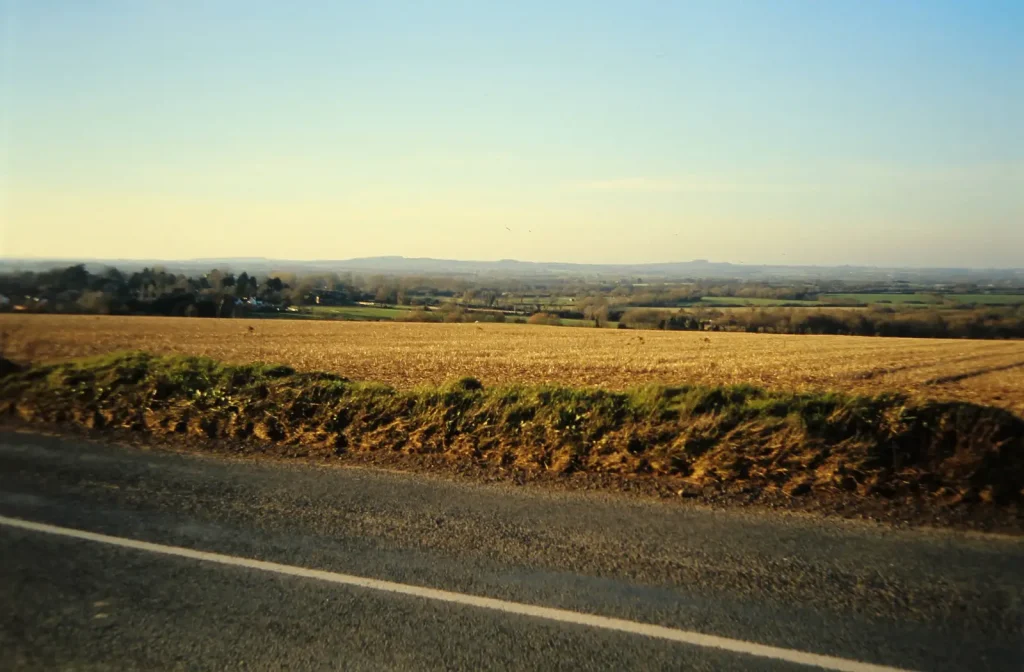
The way the Winter sunshine shines through the transparencies is just beautiful. Viewing these slides on a lightbox is like looking into a magic window – a little portal into another World. The grain is imperceptible at any but the highest magnifications.
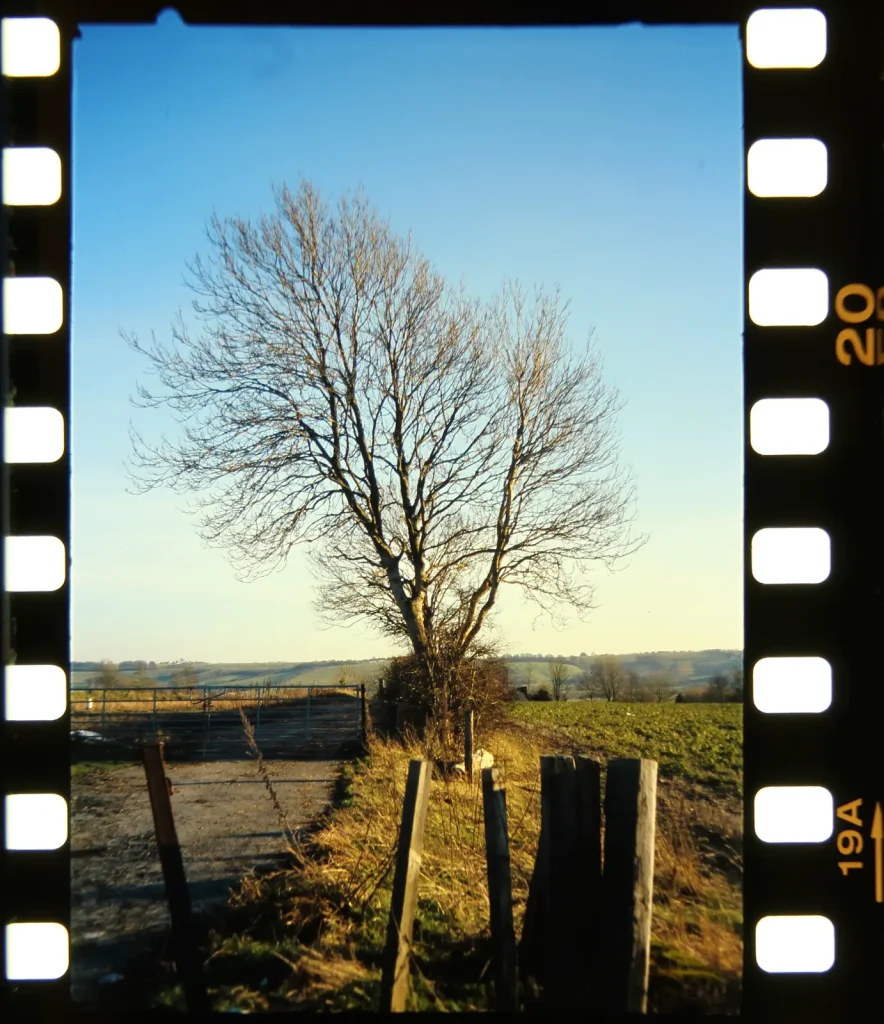
Sunsets particularly excel on Ektachrome, and I love how the Agfa 1035 has chosen to expose the shot for the sky – just as I would have done myself, if I’d had manual control.
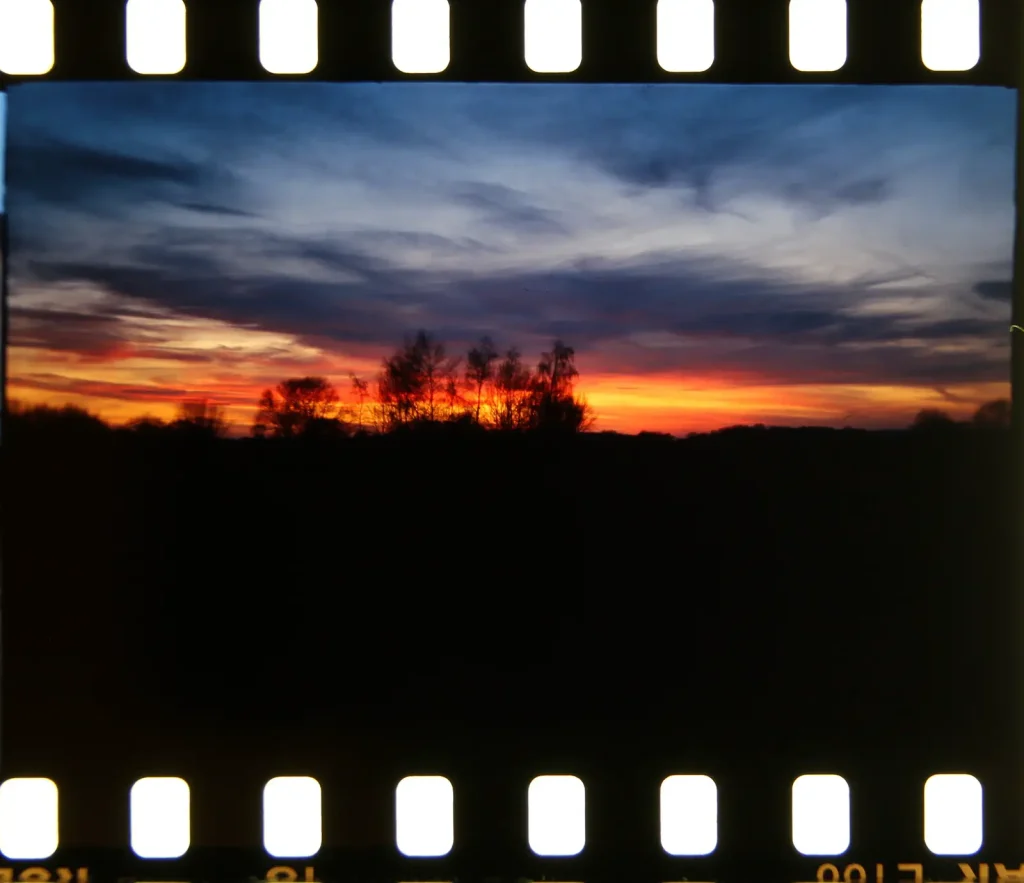
The last frame from my first roll was of a décopage horse’s head (oh yes, we know how to have fun around here!) at the National Animal Welfare Trust outside Wantage. I like how the light of the sunset picks out the colours, but I’m also impressed how much detail the film has captured of the shadows and highlights in tricky lighting conditions.
Selfie spots are a new phenomenon to me, but at least this one is genuinely photogenic!
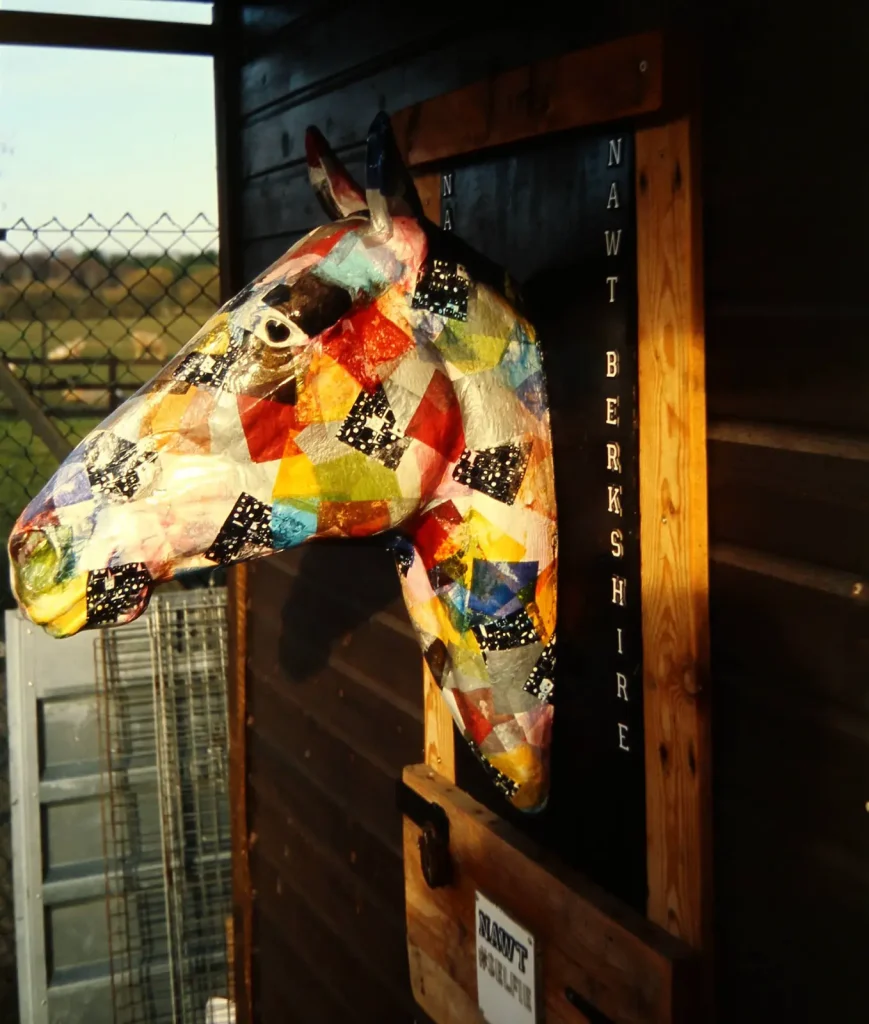
By the second roll, I was feeling a lot more confident. My hit rate for correct exposures, despite appalling user error on the first roll, had been reassuringly high. I put in another roll of Ektachrome and found these attractive scenes one afternoon over The Ridgeway, off the B4494.
Storm clouds a-brewing. Sometimes, you need to get a muddy knee for a nice shot…
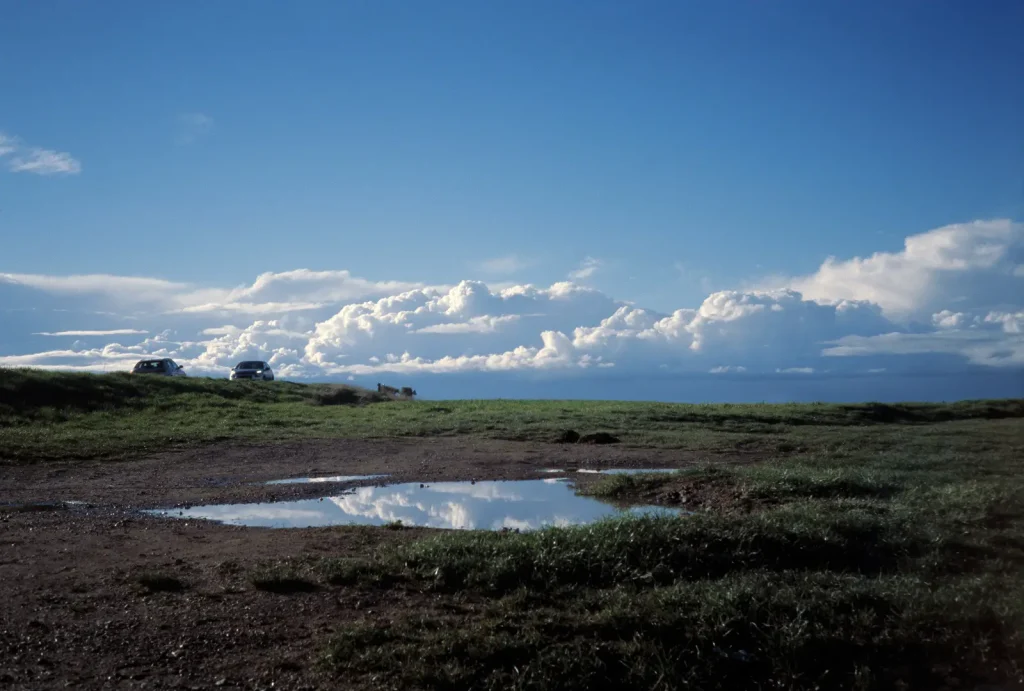
The second roll was scanned by the lovely Duncan at SilverPan Film Labs, so those photos are rather sharper in the corners than my own digitizing efforts! I love the vignetting and the blues in the sky. Ektachrome seems to love a deep blue sky.
This one reminds me of the old Windows 95 “Bliss” wallpaper…
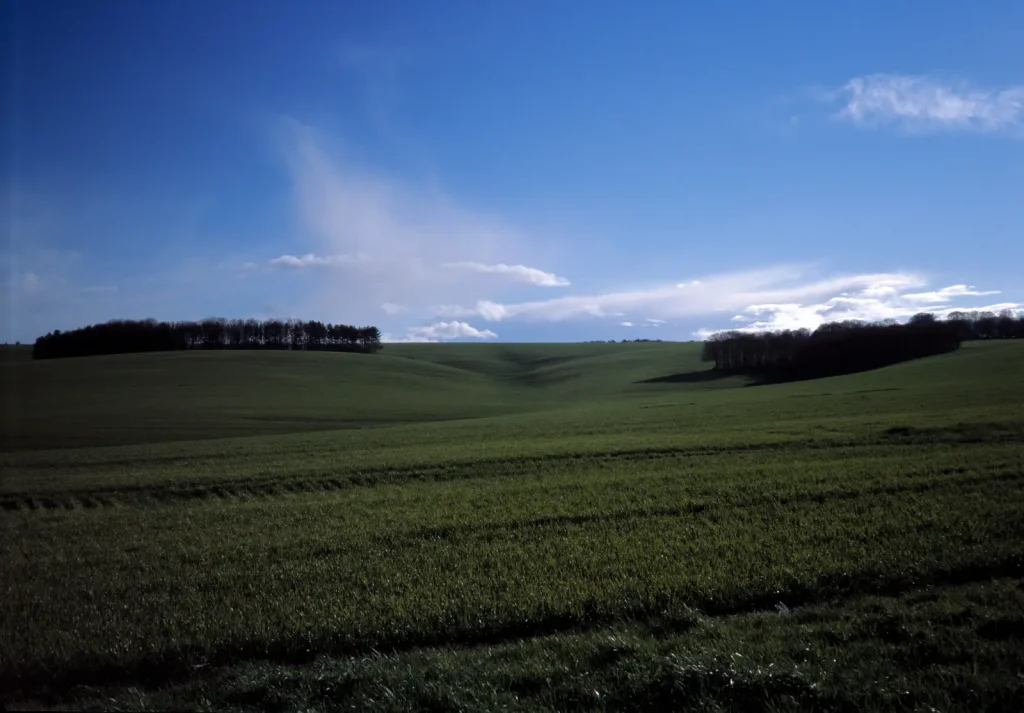
The Agfa 1035 seems to have been designed to expose for the highlights, which is great for slide film. I haven’t tried it with a negative film yet, so I don’t know if it’d end up with muddy shadows. This frame, once again, shows how well Ektachrome can handle bright highlights and deep shadows in a single scene.
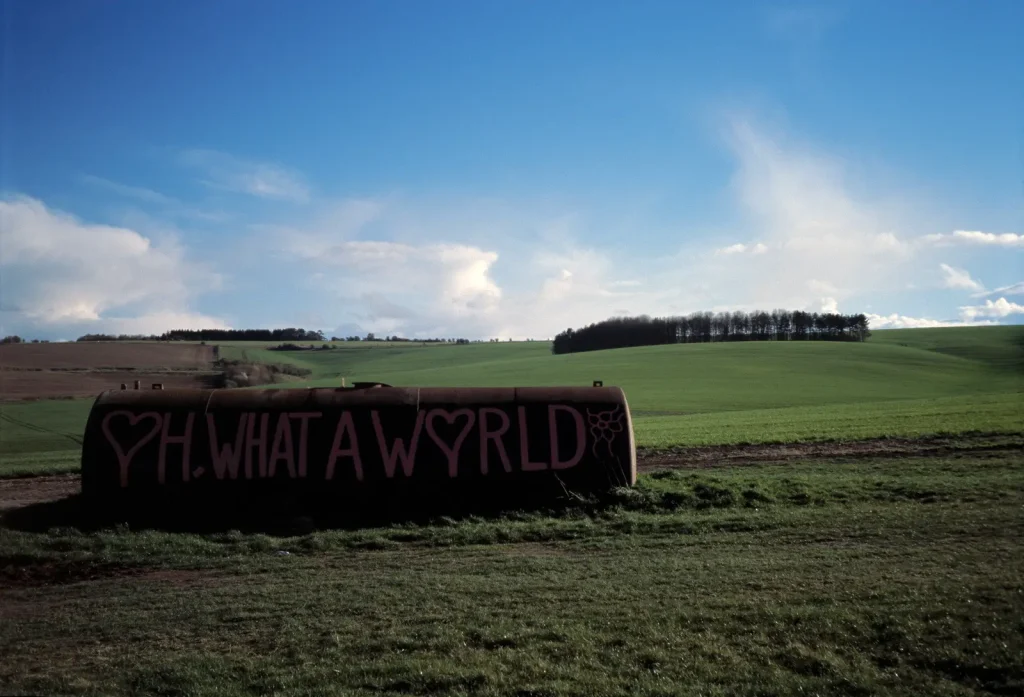
Unfortunately, mid-roll, I was taking some photos of the family, and discovered that the film counter was at zero, when I knew I’d taken at least a dozen shots already. Winding on and shooting didn’t seem to solve the problem, so I opened the back of the camera to check I’d loaded the film correctly and, in doing so, unavoidably exposed a few frames to light.
This is what happens if you open the back of a camera mid-roll. Thankfully, this shot was crooked anyway, so I don’t mind too much that it was ruined…. or improved, depending on your sensibilities!
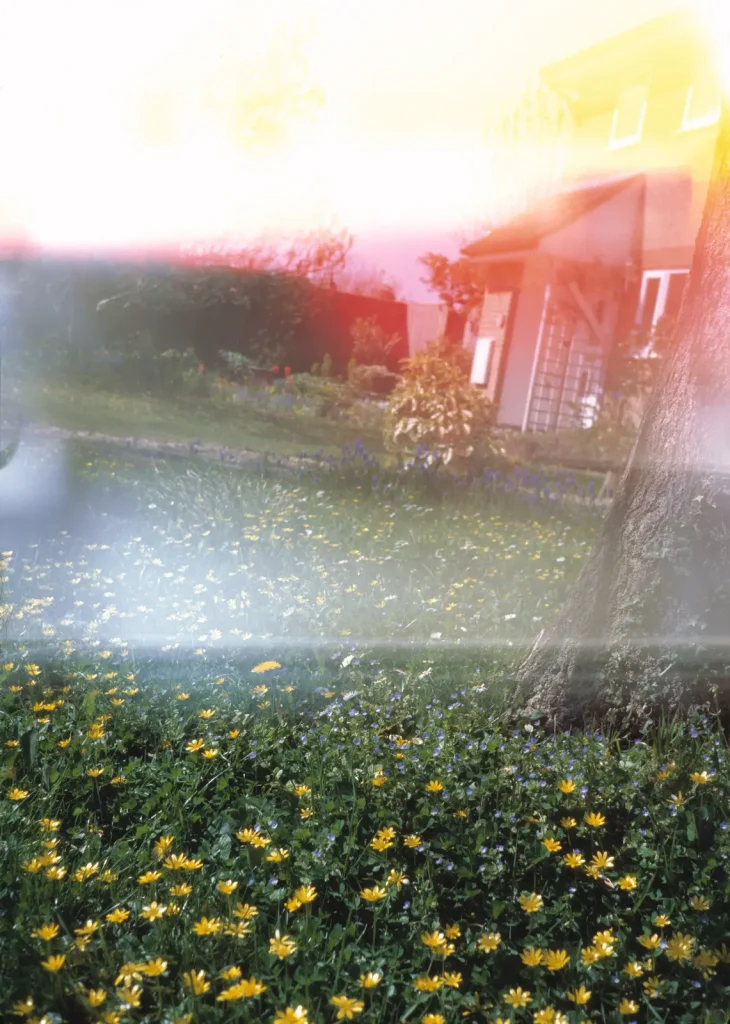
Luckily, the Agfa 1035 has a nice feature that protects most of the exposed frames from ambient light, if the back’s opened mid-roll. The shot film disappears into a nearly light-proof chamber on the left-hand side of the body. This limited my light-leaks to only a few images, and only one edge of most of them. I still don’t know what caused the problem but, when I closed the back again, the counter worked until I’d completed the roll (albeit having reset to zero, when I opened it up!).
Then, when I reached the end, I couldn’t get the camera to rewind for a while, and was worried I’d pulled the end of the film from the spool. I opened the camera in a darkbag to check, but all seemed OK. When I closed it up again, I was able to rewind as normal.
In summary, despite all the shortcomings, I really enjoyed the discipline of having to remember to set the aperture and focus without any overt reminders. I also loved how pocketable the camera is (I must have bigger pockets than Hamish!), and I was very impressed with the auto exposure . More than that, I’m a little bit in love with Ektachrome, and I’ve already bought a cartridge of Super 8 to shoot over the Summer.
Just in case I’ve inadvertently destroyed Hamish’s Agfa 1035; I liked it enough that I bought another one for “peanuts + postage” on that infernal auction site, and it seems in excellent condition. I’m going to persevere, and maybe teach my 6yr old how to use it, too. Annoyingly, I just know that his photos will be even better than mine, so look out for a “5 frames” from him in the future!
Dave Walker
https://www.instagram.com/davethewalker80/
Share this post:
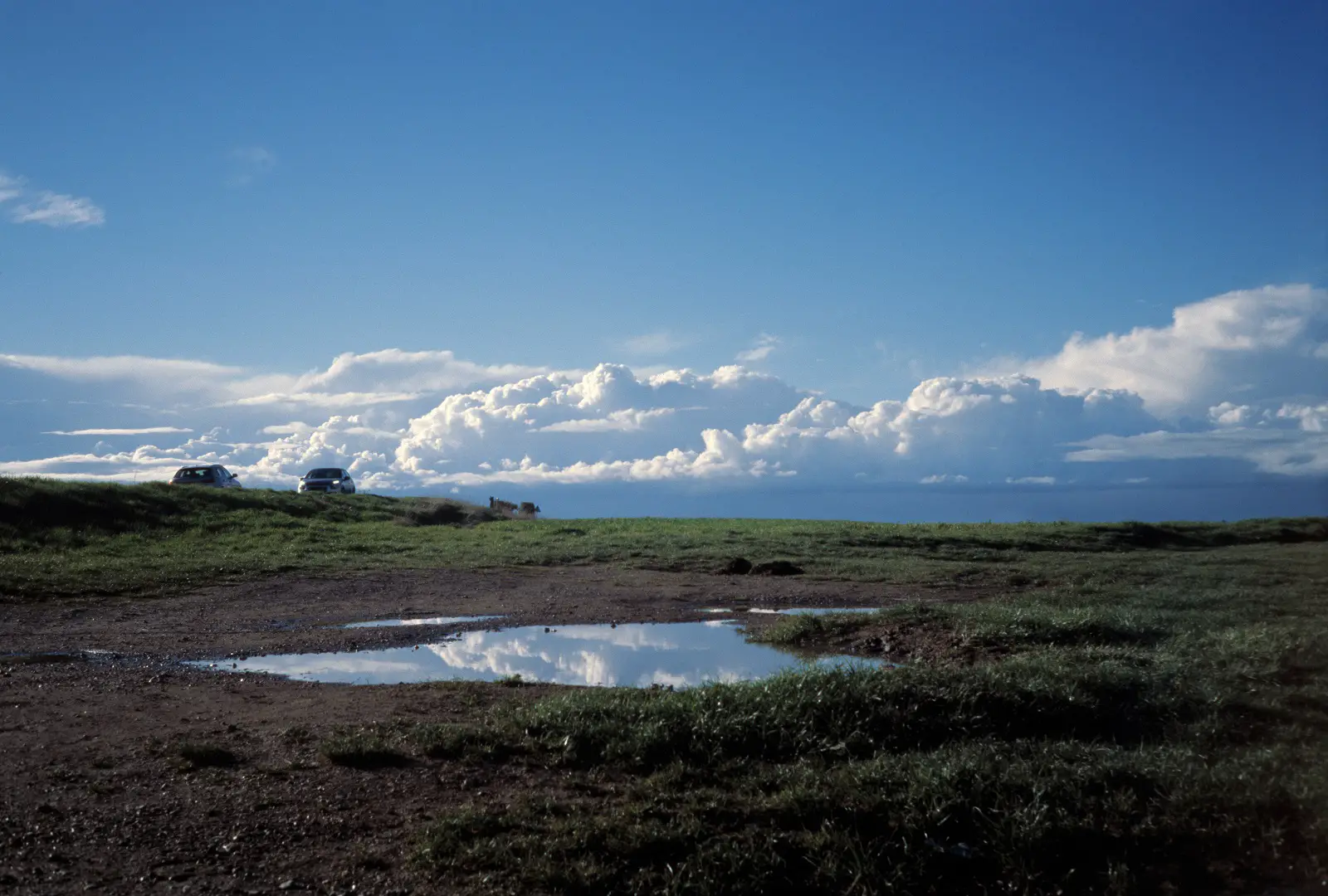








Comments
Bill Parker on Agfa 1035 – What Hamish’s Unloved Camera Did Next… An Ektachrome Adventure – By Dave Walker
Comment posted: 28/07/2019
Comment posted: 28/07/2019
Terry B on Agfa 1035 – What Hamish’s Unloved Camera Did Next… An Ektachrome Adventure – By Dave Walker
Comment posted: 28/07/2019
You've mentioned that the metering seems weighted for the sky in landscape views and the under-exposed foreground is what leads me to be confident in trying 1/3 stop extra. I like the portrait orientation image of the tree in the late afternoon sun, the effect of which very much reminds me of the days I played around with distinctive representation of nature that was the signature of Orwochrome.
Comment posted: 28/07/2019
Roger B. on Agfa 1035 – What Hamish’s Unloved Camera Did Next… An Ektachrome Adventure – By Dave Walker
Comment posted: 28/07/2019
Comment posted: 28/07/2019
KS on Agfa 1035 – What Hamish’s Unloved Camera Did Next… An Ektachrome Adventure – By Dave Walker
Comment posted: 28/07/2019
So it's to my mild dismay to almost always read people treating it as though it were the same as the average £2 thrift store jobby, not paying attention to the controls or reading the manual or any of that "hi-fi" stuff. Granted it took me a roll or two to cotton on that while rewinding the crank should be turned all the way or it won't start the next crank. Minor details, surely.
The shutter sound though, there's no getting around how fugly it is; it's like the last gasp of a child's hand-me-down music box which an elder sibling already wore out. Blegh!
Comment posted: 28/07/2019
Huss on Agfa 1035 – What Hamish’s Unloved Camera Did Next… An Ektachrome Adventure – By Dave Walker
Comment posted: 28/07/2019
Great pics! I have the 1535 version w the rangefinder and love it. Never had a problem w the rewind/advance or frame counter so maybe something got banged in shipping?
The design is very Plaubel-esque which is most excellent. The one big design flaw is that if you need to change the batteries you need to open the film back. A wee bit inconvenient if there is film in the kamera!
Comment posted: 28/07/2019
Comment posted: 28/07/2019
Comment posted: 28/07/2019
James Tappin on Agfa 1035 – What Hamish’s Unloved Camera Did Next… An Ektachrome Adventure – By Dave Walker
Comment posted: 29/07/2019
Comment posted: 29/07/2019
Comment posted: 29/07/2019
Comment posted: 29/07/2019